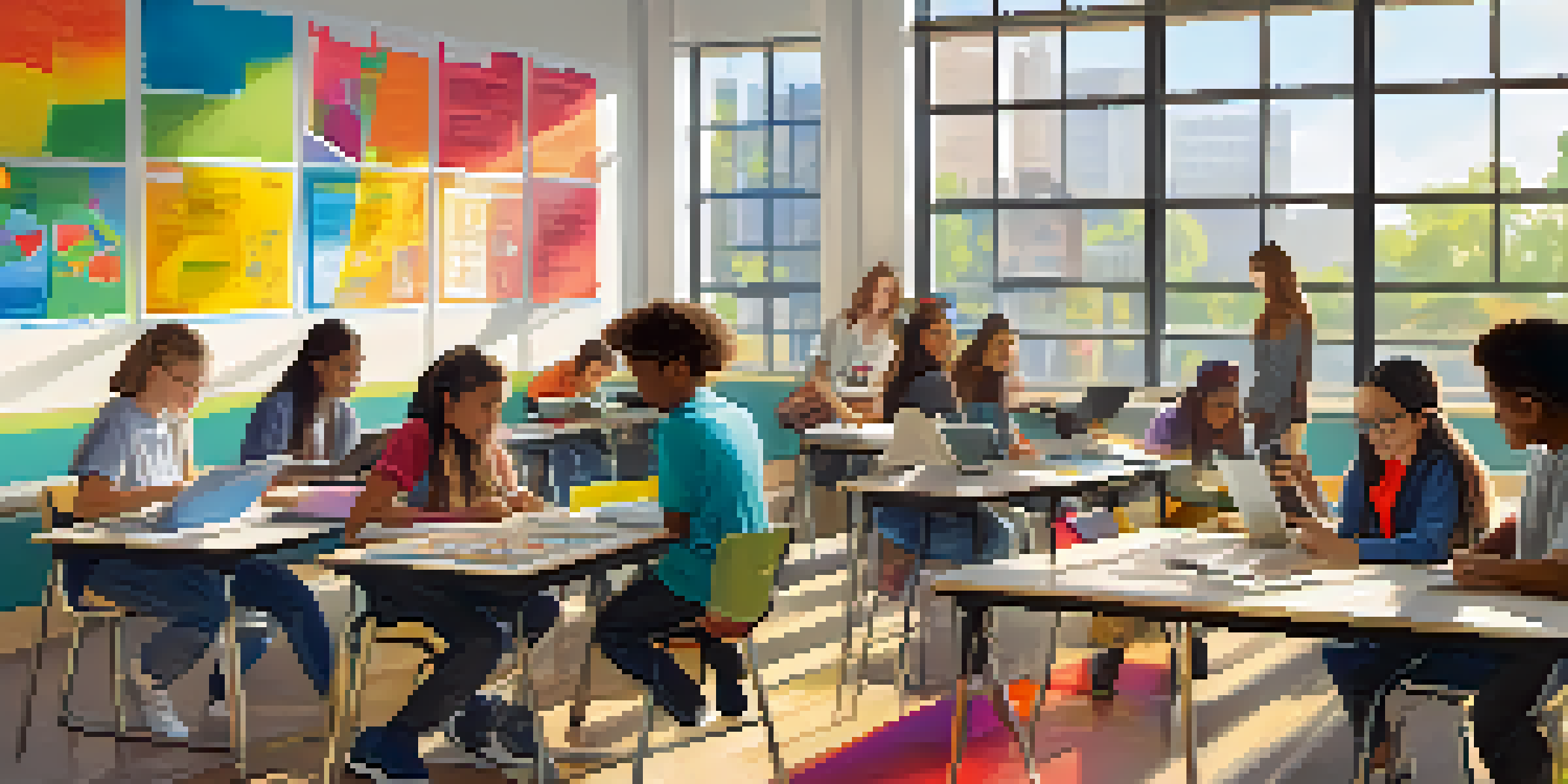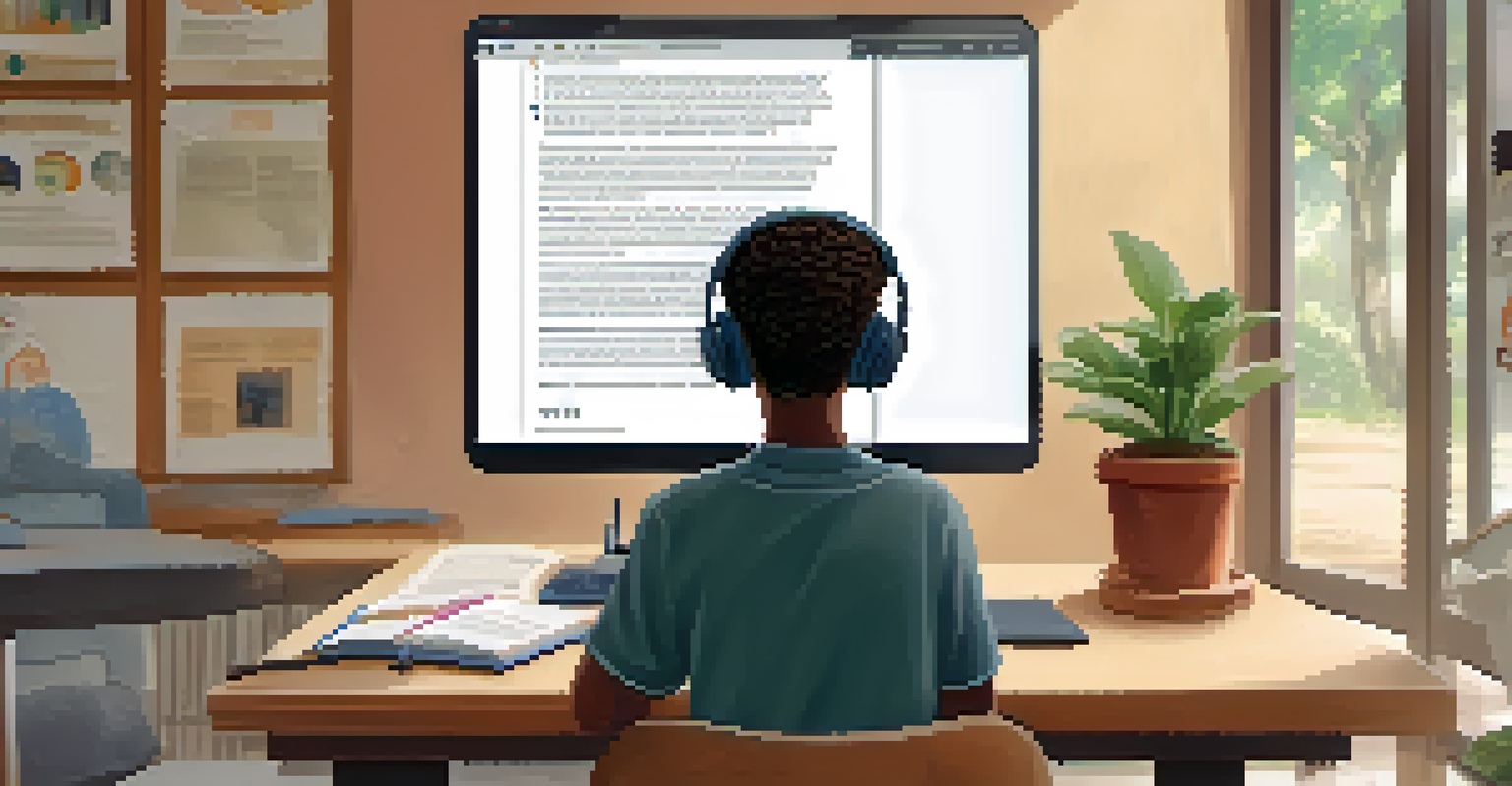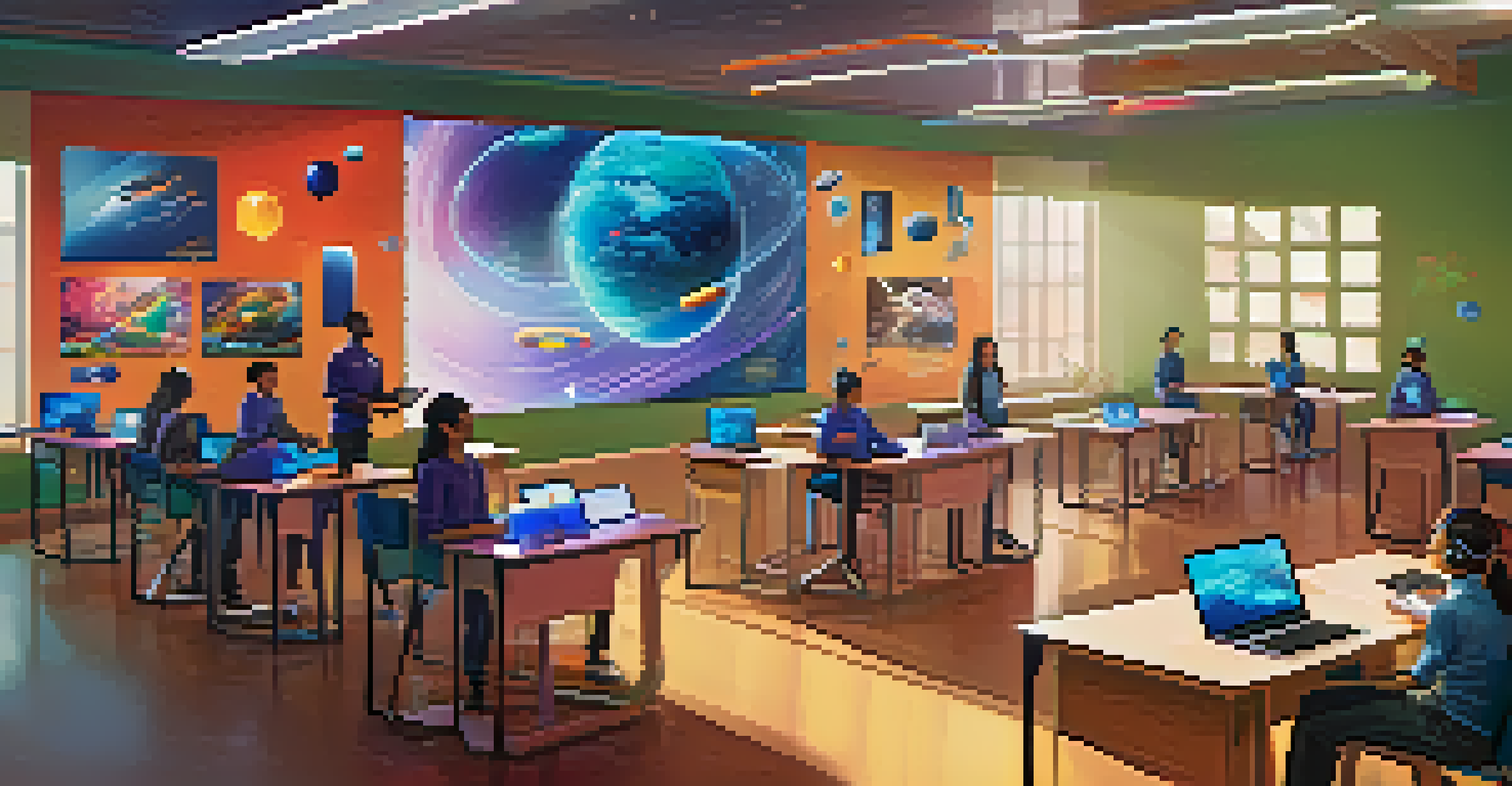Accessibility in Education: Tech Tools for Learning

Understanding Accessibility in Education
Accessibility in education means ensuring that all learners, regardless of their abilities or disabilities, have equal access to educational resources. This involves creating an inclusive environment where everyone can thrive. By embracing accessibility, educational institutions can help break down barriers that hinder learning.
Accessibility is not a privilege, but a right.
For instance, students with visual impairments may require text-to-speech software to access reading materials. Similarly, those with hearing impairments might benefit from captioned videos. Understanding these needs is crucial for educators and administrators as they work to provide equitable learning opportunities.
Ultimately, accessibility is not just about compliance with laws; it’s about fostering a culture of inclusivity. When all students have the tools they need to succeed, everyone benefits—creating a richer, more diverse learning environment.
The Role of Assistive Technology in Learning
Assistive technology plays a pivotal role in enhancing educational accessibility. This includes a wide range of devices and software designed to help students with disabilities. Examples range from screen readers that convert text to speech to specialized keyboards for those with motor difficulties.

These tools not only aid in navigating educational content but also empower students to participate in classroom discussions and activities fully. For example, speech-to-text applications can help students with writing difficulties express their thoughts more freely, leveling the playing field in assignments and tests.
Accessibility Empowers All Learners
Creating an inclusive educational environment ensures that all students, regardless of their abilities, have equal access to learning resources.
By integrating assistive technology into their classrooms, educators can ensure that all learners are equipped to engage with the curriculum. This not only aids individual learning but also fosters a collaborative classroom atmosphere where everyone can contribute.
Popular Tech Tools for Enhanced Learning
Several tech tools are making waves in enhancing accessibility in education. Tools like Google Classroom and Microsoft Teams offer features like screen sharing and captioning, which can be invaluable for students with various learning needs. These platforms provide a collaborative environment where all students can engage with the material, regardless of their abilities.
Inclusion is not a matter of political correctness. It is the key to growth.
Additionally, apps like Bookshare and Learning Ally provide accessible reading materials for students with visual impairments or reading disabilities. With a vast library of audio and digital books, these resources ensure that students can access the same materials as their peers.
Moreover, tools such as MindMeister or Trello can assist students in organizing their thoughts and projects visually. This can be particularly helpful for those who struggle with traditional note-taking methods, allowing for a more personalized approach to learning.
The Importance of Training Educators on Accessibility
Even with the best tools available, their effectiveness hinges on educators’ understanding and training in accessibility. Providing professional development opportunities focused on inclusive teaching strategies can empower teachers to utilize technology effectively. This training should cover not only how to use the tools but also the underlying principles of accessibility.
For instance, educators should learn how to adapt lesson plans to incorporate assistive technology. This might involve creating alternative assessments or using multimedia resources to cater to diverse learning styles. When teachers are equipped with this knowledge, they can create more inclusive classroom environments.
Assistive Tech Enhances Learning
Integrating assistive technology in classrooms empowers students with disabilities to participate fully in their education.
Additionally, ongoing support and resources should be made available to educators. By fostering a community of practice around accessibility, schools can ensure that all teachers feel confident in their ability to meet the needs of every student.
Creating an Inclusive Classroom Environment
An inclusive classroom environment is key to fostering accessibility in education. This involves more than just implementing tech tools; it requires a shift in mindset among educators and students alike. Creating a culture of inclusivity means valuing diverse perspectives and learning needs.
For instance, teachers can promote collaboration among students by assigning group projects that encourage teamwork and communication. This not only helps students learn from one another but also builds empathy and understanding of different abilities and challenges.
Moreover, classroom layouts can be adapted to ensure physical accessibility for all students. Simple changes, like rearranging furniture or providing flexible seating options, can make a significant difference in creating a welcoming atmosphere that accommodates everyone.
Feedback and Continuous Improvement in Accessibility
Gathering feedback from students about the accessibility of educational tools and resources is crucial for continuous improvement. Regular surveys and open discussions can help educators understand what’s working and what needs adjustment. This feedback loop ensures that all voices are heard, especially those of students with disabilities.
For example, a student may find a particular tool challenging to use, while another may have suggestions for improvement. By actively seeking this input, educators can make informed decisions about which tools to adopt or modify. This collaborative approach fosters a sense of ownership among students.
Continuous Feedback Drives Improvement
Regular feedback from students about accessibility tools is essential for making informed adjustments and fostering a supportive learning environment.
Ultimately, the goal is to create a dynamic educational environment that evolves with the needs of its learners. By prioritizing feedback and making necessary changes, schools can ensure that their accessibility initiatives remain effective and relevant.
Looking Ahead: The Future of Accessibility in Education
As technology continues to advance, the future of accessibility in education looks promising. Innovations such as AI-driven tools and virtual reality are paving the way for even more inclusive learning experiences. These technologies can provide personalized learning pathways that cater to individual strengths and challenges.
For instance, AI can analyze a student’s learning patterns and suggest tailored resources that suit their needs. Virtual reality can offer immersive experiences that engage students in ways traditional methods cannot, making learning more accessible and enjoyable.

However, it’s essential to approach these advancements thoughtfully, ensuring that they are implemented with inclusivity at the forefront. By prioritizing accessibility in all future educational technology developments, we can create a learning landscape where every student has the opportunity to succeed.